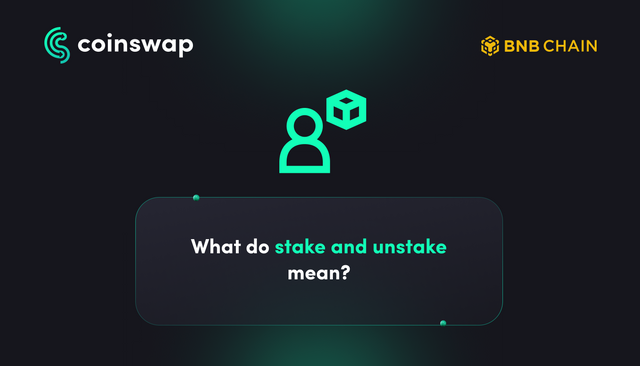
Cryptocurrency has evolved far beyond its early days of just buying and holding digital assets. As the crypto space has grown, various ways to earn, invest, and participate in blockchain networks have emerged. Two fundamental concepts that have gained significant attention in recent years are "staking" and "unstaking."
🌟 What is Staking?
Staking is a process where cryptocurrency holders lock up a certain amount of their tokens to support the operations of a blockchain network. In return for this commitment, stakers are rewarded with additional tokens. It's akin to earning interest on a traditional savings account, but in the crypto world, it's often referred to as "earning passive income."
🔒 How Does Staking Work?
When you stake your tokens, you're essentially participating in the consensus mechanism of a blockchain network, helping to validate and secure transactions. This process varies depending on the network, but it usually involves locking your tokens in a wallet or a smart contract. These tokens are then used as collateral to support network activities, such as processing transactions or creating new blocks.
🌐 Why Stake?
Staking offers several benefits, including:
Earning Rewards: Stakers receive rewards in the form of additional tokens, which can significantly boost their holdings over time.
Supporting the Network: By participating in staking, you contribute to the security and stability of the blockchain network.
Influencing Decisions: Some networks allow stakers to participate in governance decisions, giving them a say in network upgrades and changes.
🔓 What is Unstaking?
Unstaking, on the other hand, is the process of unlocking and withdrawing your previously staked tokens. This can be done at any time, but it usually involves a waiting period or an "unstaking period" during which your tokens are frozen. This delay ensures network security and prevents abrupt withdrawals that could destabilize the system.
🔄 Why Unstake?
Unstaking is typically done for the following reasons:
Need for Liquidity: You might need access to your tokens for trading, spending, or other investments.
Profit-Taking: If your staking rewards have accumulated, you may choose to unstake to realize those gains.
Changing Networks: You might want to switch to another blockchain network or project, necessitating the withdrawal of your staked tokens.
In summary, staking and unstaking are essential components of the cryptocurrency ecosystem. Staking allows you to earn passive income and actively participate in blockchain networks, while unstaking provides flexibility and liquidity when you need it. These concepts represent the evolving landscape of crypto, where individuals can do more than just HODL; they can actively contribute to and benefit from the growth of blockchain technology. 🌐💰
Remember, the specific mechanisms and rewards associated with staking can vary from one blockchain network to another, so it's essential to research and understand the rules and potential gains before participating. 📚🔍